Analog Zombies or Retro Nostalgia?
The Second Life of cassette recorders as musical instruments
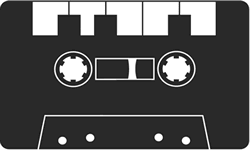
Analog Recording
Analog recording on tape reminds me of handwriting on paper: through hand or microphone membrane, movements are directly transmitted and create a track on the gliding medium. This track consists of more than just the inscribed content. The incertitudes of the technical procedure and recording material are also included as individual marks on the recording.
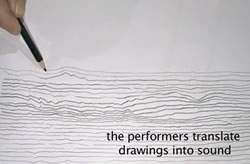

Every further act of copying generates more individual changes. Measured according to digital standards, these changes, caused by ambient noise, result in a degradation of the soundfile. During transcription, a text often becomes modified by mistake or arbitrary alterations made by the copyist. In this way, many independent representations can emerge from the primary document with traceable chronology. In some cases they even contain information about their origin / formation.
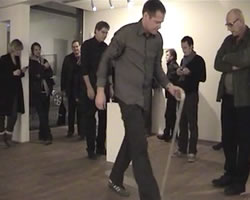

The digital medium adopts a neutral position to the stored content. In contrast, the tape-recorded sound is always connected to the technical memory of its recording.
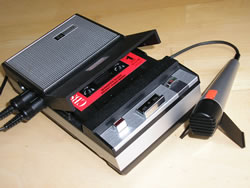
Cassette Recorders
For a long time after 1963, cassette recorders were one of the most important recording formats, not only for popular music. Easier and safer to handle than todays digital recorders, they were offered in many different models, from the cheapest table devices to semi-professional 8‑track recorders. This portable music conquered public places.
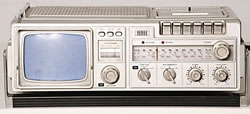
Since the introduction of digital technology with rapidly changing formats, we have lost the security of a common standard over longer periods. On the other hand, digital recording was developed to reproduce a clearer sound. It differentiates more sharply between sound, tape noise or wild noise, in general: between music and non-music. The increasing importance of MP3 and other compressed data types for the consumer indicates a change in technical priorities: disk memory space becomes more important than quality of sound. However, Nakamichi and others produced legendary high-end cassette machines.
Second Life
A second life of cassette recorders seems possible today, even without an interest in the nostalgic retro-style, because they are no longer useful as a recording format. Contrary to digital recorders, which are outmatching them in technical results, the simplest cassette devices have some advantages as “electroacoustic instruments”:
- They self-produce sounds as a piano does by playing abstract music notation: different noises, crackles, clicks of the keys, etc.
- They change the recorded sound while playing: dependent on the specific device, non-linear distortion and tape noise may result — comparable to an instrumental interpreter realizing an abstract piece of written music. Also the pitches are shifted when the recording is played on different cassette recorders, because they never work at exactly the same tape speed.
- The keys and knobs are not absolutely controllable, the resulting sounds are not exactly repeatable, but many uncalculable variations can be created by recording and playing.
Even so, the cassette keyboard can be used in a virtuoso manner by professional players.
Therefore cassette recorders can indubitably be assimilated into the noble class of traditional instruments, and be performed by passionate enthusiasts and professional musicians from written scores, in concerts or other contemporary forms of performance, in order to prevent it from falling into oblivion.
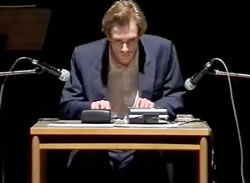

Cassette Recorders used as Musical Instruments?
Due to the fact that they are an outdated music storage device, cassette recorders can now be used for purposes other than those for which they were originally intended: as traditional instruments to reproduce music. The original sound to be recorded equates to the sheet music / notation; the playback is comparable to the interpretation. This would not be sufficient reason for artistic interest in antiquated machines.
Actually it is possible to compose very complex interactive situations and manners of playing the recorders because the interpreter is able to operate all functions during the performance directly and without latency. Recording, playback, rewind, sound control etc. can be used without consideration of their primary function and precisely notated in the composition. The attributes of the devices, as visible and moveable sound objects, highlight their uniqueness in performance.
While the entertainment industry focuses on devices for the reproduction of music and the administration of masses of digital copies, the music user gets back a playful toy. He loses the option of digital sound processing and virtual effects, but in return he gains easy and arbitrary access to simple live sampling and movement of sound in space with battery-driven cassette devices.
This opens up a wide and unknown field also for improvisation.
Composition using Cassette Recorders
Works composed for cassette recorders are at least similar to formal specifications of instrumental music. At this point it is necessary to develop and find æsthetic criteria adequate to this medium, that are not restricted to the emulation of classic positions in art. Music for cassette recorders makes sense only when it focuses the peculiarities of this medium-instrument and cannot be realized alternatively with digital devices.
Since 1999 I have been working on compositions for cassette recorders with and without other instruments combined in different performance situations. Normally all playbacked sounds are recorded during performance, not pre-produced in a studio. The underlying concepts of a selection of works will be outlined here.
Recordame (1999), for piano and cassette recorder
This piece is based on Samuel Beckett’s Krapp’s Last Tape. The mostly secluded working pianist is presented with a cassette recorder as a companion. He records himself and unfolds the recorder’s versatility in being a superviser, listener or accompanist. The recorder’s keys extend the keyboard, which is precisely notated in the score, and vice versa, while the keyclicks related to the muted sounds of prepared piano strings. The recorder plays back different tape noises and fragments of the piano performance, simultaneously to the live-piano. By searching through these recordings via rwd and ffwd buttons, the medium does not remain neutral. It interferes with the music. The tape is already recorded over before the “composition” is completely recorded.
By searching through these recordings via rwd and ffwd buttons, the medium does not remain neutral.
It interferes with the music. The tape is already recorded over before the "composition" is completely recorded.
Taurus CT-600 (2002), for 2 cassette recorders
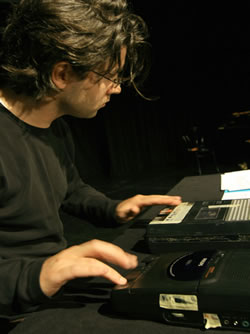
The title of this work was the name of a very significant cassette recorder of the 80s, which was part of the revolution of handhelds and brought mobile music everywhere… and it was also the victim of a succession of faster revolutions of digital formats. In this composition, two recorders take part in a dialogue without other instruments. They are freed from their original functions and record each other’s sounds, trying to develop a new vocabulary made up of speech mistakes.
rec & play (2004), for cassette recorder ensemble and a soloist
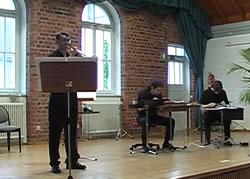

Similar to a concerto, a multidirectional wind instrument solo player is opposed to five accompanying cassette recorders which are arranged at different distances in the performance room. They are used to comment on the soloist’s part with recorded fragments, modified sounds and their own noises.
You like music? [Mögen Sie Musik?] (2005), a listening test performance with integrated auditor
People of today are permanently listening to and archiving music. This requires rapid decisions of taste in order to decide whether to buy or dump. In this performance the “investigator” plays masses of music cassettes of all styles. A listener has to speedily rate them. During the hearing and decision-making process the playback is manipulated by the investigator; the auditor’s favourite music is documented by a simultaneous recording. At the end of the session the listener receives a cassette tape with the sound extract of his personal taste.
Alphorn Duet with Tape Echoes [Alphornduett mit Bandechos] (2008)
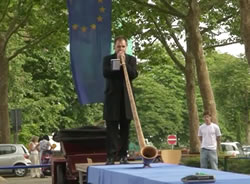

Two players perform at a distance of 100 meters from each other, the duet plays with the possibilities of the sonic delay and extremely spread sound. Between them six cassette recorders are arranged which a third performer uses to record and play back toy instruments (such as the sounds of cows and bells) and the horn echoes on endless cassettes.
Intermezzo with Brahms op. 119 (2010), for flute, doublebass clarinet, 19-division trumpet, percussion and 2 cassette recorders
In this composition Brahms’ Intermezzo in B-minor (No. 1 of Brahms’ 4 Klavierstücke, Op. 119) is played by a cassette recorder and simultaneously a very extreme arrangement is performed by the ensemble. The “pure” piano piece is recorded by a sterile MIDI-piano without any interpretation: there are no changes in dynamics, articulation, pedalling or rubato.
These means of musical interpretation are exaggerated in the arrangement for the quartet: the composition elaborates the difference between the precisely written part of music and the individually altered parameters. In addition, the cassette recorders are played as keyboard instruments — thereby altering the original in a strange way.
Social top